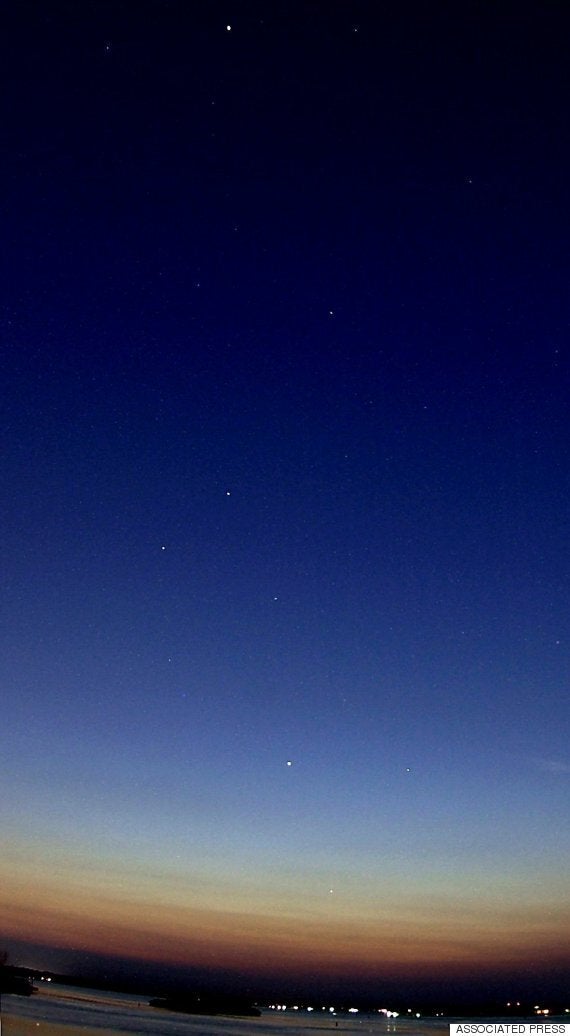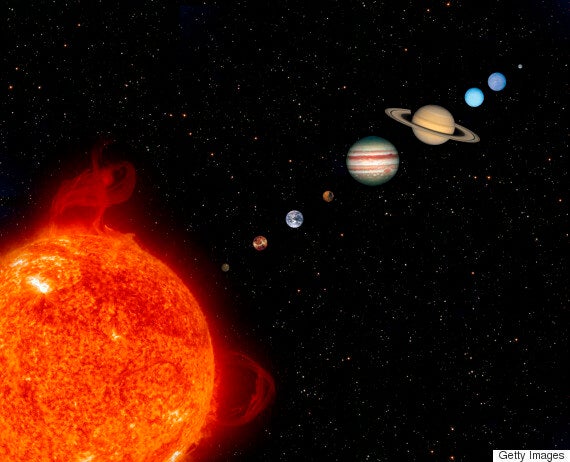For the first time in a decade all five of the bright planets will be visible to the naked eye at the same time.
Mercury, Venus, Saturn, Mars and Jupiter will take pride of place in the morning sky starting on 20 January through till the morning of the 20 February.
SEE ALSO:
- Astronaut Scott Kelly Wishes The Earth Goodnight With The Most Epic Picture From Space
- NASA Posts Remarkable Photo Of Earth 'Rising' Above Moon From Lunar Reconnaissance Orbiter
- NASA's Hubble and Spitzer Space Telescopes Find 'Faintest Galaxy' From Early Universe
- Over 8000 NASA Moon Mission Photos Are Now Free On Flickr In Glorious High-Definition
How Can I See All Five Bright Planets In The UK?
The UK Met Office has tweeted this handy picture to help you find the planets if you fancy getting up really early.
Dr Louise Devoy, Curator of Royal Observatory Greenwich also has this advice for any avid stargazers:
"For the next month, early risers in the UK will be able to see 5 planets in the sky just before dawn, around 7am. If you look towards the south-eastern part of the horizon, just to the right of where the Sun is starting to emerge, you’ll see five points of light in a diagonal line stretching across to the south-western part of the horizon. The small faint light closest to the horizon is Mercury while Venus shines brightly nearby. The next in line is Saturn with its slightly golden hue followed by the red planet, Mars. The gas giant Jupiter will shine brightly at the end of the line above the western horizon.
Apart from the faint light of Mercury, it should be easy to observe the planets with the naked eye, even if you live among city lights."

Jupiter will be the first to appear followed by Mars, Saturn and Venus with Mercury appearing last. While the southern hemisphere will get a favoured view of the spectacle it's believed that those of us in the UK should be able to see the event every morning just after sunrise.
In the UK you'll be able to see the event almost every morning just after sunrise. The great thing about this particular event is that you won't need any extra equipment in order to get a good view.
The best place to watch is of course an area with low-light pollution so try to go out to a nearby park or contact a local stargazing group to find out if there are specific viewing sessions taking place in your area.
For specific timings and where to look, you can download a host of apps which will turn your smartphone into a virtual stargazing map.
The last time stargazers were able to see this phenomenon was back in 2005 when the planets became visible during the day between Dec. 15, 2004 and Jan. 15, 2005.

The next time the planets align is predicted to be in the evening sky from Aug. 13 to 19, according to EarthSky.org, but Mercury and Venus will sit low and not be easily seen from the northern hemisphere.